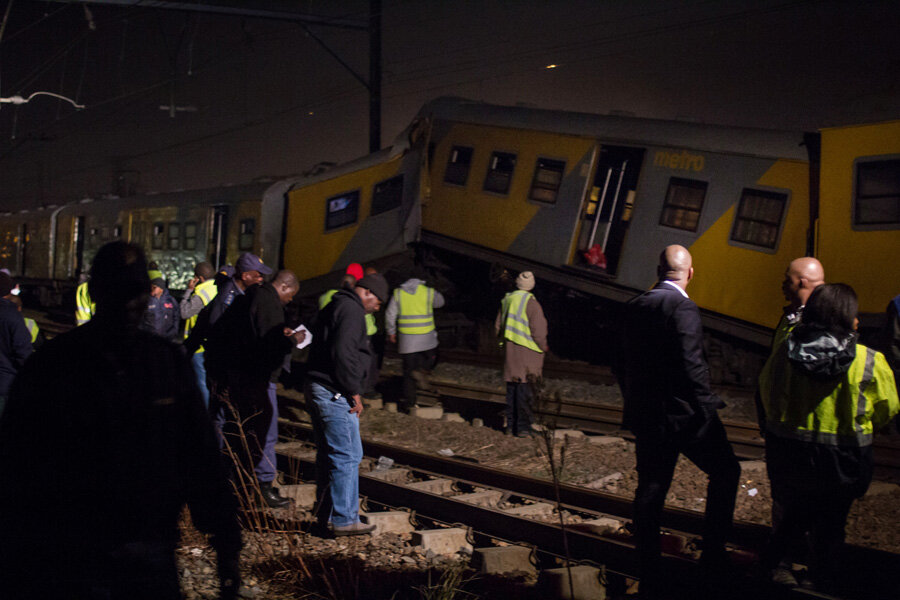Train collision in South Africa: How to survive a train crash
Loading...
A collision between two trains in South Africa on Friday injured around 30 people.
The crash took place close to South Africa’s largest city, Johannesburg, at about 6:30 p.m., the BBC reported. The cause of the crash is currently under investigation.
Train trips are usually smooth and quiet, but sometimes, things go terribly wrong.
On May 12, an Amtrak train traveling from Washington DC to New York City derailed in Philadelphia, killing eight passengers and injuring more than 200 people.
Two months earlier, another Amtrak train derailed in North Carolina after crashing into a tractor, sending some 40 passengers to the hospital.
According to the Federal Railroad Administration, in 2014 there were more than 1,700 train accidents, including more than 1,200 derailments and nearly 150 collisions. The vast majority involved freight trains. Between 2011 and 2014, there were only 4 fatalities from train accidents anywhere in the United States.
While structural improvements can make trains safer, concerned passengers can also take measures to be safe in the unlikely event of a train crash.
Transportation expert Robert Paaswell told ABC that in case of collision, the first and last cars are most likely to be hit, so passengers can avoid sitting in the front or back cars.
You can also take a rear-facing seat. In the event of a crash, the sudden stop of the train will push you into the seat’s back, while forward-facing travelers could be thrown forward.
Avoid sitting under luggage overheads, as baggage can fall and cause injuries.
Long pants and long sleeved shirts made of natural fibers won't melt in the event of a fire, and can offer protection from scrapes.
Avoid wearing high heels, sandals, or flip-flops. Sturdy, comfortable shoes can help you move quickly within wreckage.
Carry a small flashlight or download a flashlight app so you can find your way in the darkness.
Pick a seat on the aisle to avoid broken window glass or, in extreme situations, being thrown from the train.
Always have an escape plan. Take note of the nearest exit and make sure you know how to open the emergency window exits.
And remember that railroad accidents, particularly for passenger trains, are exceedingly rare.
In June, Amtrak President and CEO Joseph Boardman told Congress that the heavily traveled Northeast Corridor had not had a fatal accident in 28 years, prior to the May 12 derailment.
"Generally speaking, we have put together a safety system that weaves a tight net – or even a series of layered nets – with each layer guarding against the possibility of a failure that the previous layers don’t catch," he testified.
"Nothing is impossible, but we try to guard against the full range of contingencies," he said.









